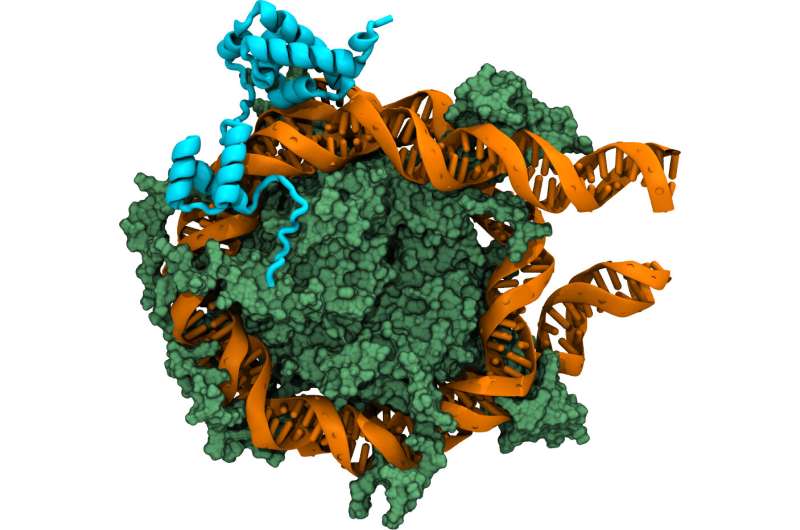Computer simulations visualize how DNA is recognized to convert cells into stem cells

Researchers from the group of Vlad Cojocaru together with colleagues the Max Planck Institute in Münster (Germany) have revealed how an essential protein helps to activate genomic DNA during the conversion of regular adult human cells into stem cells. Their findings are published in the Biophysical Journal.
A cell's identity is driven by which DNA is "read" or "not read" at any point in time. Signalling in the cell to start or stop reading DNA happens through proteins called transcription factors. Identity changes happen naturally during development as cells transition from an undesignated cell to a specific cell type. As it turns out, these transitions can also be reversed. In 2012, Japanese researchers were awarded the Nobel prize for being the first to push a regular skin cell backwards to a stem cell.
A fuller understanding of molecular processes towards stem cell therapies
Until now, it is unknown how the conversion of a skin cell into a stem cell happens exactly, on a molecular scale. "Fully understanding the processes with atomic details is essential if we want to produce such cells for individual patients in the future in a reliable and efficient manner," says research leader Vlad Cojocaru of the Hubrecht Institute. "It is believed that such engineered cell types may in the future be part of the solution to diseases like Alzheimer's and Parkinson's, but the production process would have to become more efficient and predictable."
Pioneer transcription factor
One of the main proteins involved in stem cell generation is a transcription factor called Oct4. It induces gene expression, or activity, of the proteins that 'reset' the adult cell into a stem cell. Those genes induced are inactive in the adult cells and reside in tightly packed, closed states of chromatin, the structure that stores the DNA in the cell nucleus. Oct4 contributes to the opening of chromatin to allow for the expression of the genes. For this, Oct4 is known as a pioneer transcription factor.
The data from Cojocaru and his Ph.D. candidate—and first author of the publication—Jan Huertas show how Oct4 binds to DNA on the so-called nucleosomes, the repetitive nuclear structures in chromatin. Cojocaru: "We modelled Oct4 in different configurations. The molecule consists of two domains, only one of which is able to bind to a specific DNA sequence on the nucleosome in this phase of the process. With our simulations, we discovered which of those configurations are stable and how the dynamics of nucleosomes influence Oct4 binding. The models were validated by experiments performed by our colleagues Caitlin MacCarthy and Hans Schöler in Münster."
One step closer to engineered factors
This is the first time computer simulations show how a pioneer transcription factor binds to nucleosomes to open chromatin and regulate gene expression. "Our computational approach for obtaining the Oct4 models can also be used to screen other transcription factors and to find out how they bind to nucleosomes," Cojocaru says.
Moreover, Cojocaru wants to refine the current Oct4 models to propose a final structure for the Oct4-nucleosome complex. "For already almost 15 years now, we know that Oct4 together with three other pioneer factors transforms adult cells into stem cells. However, we still do not know how they go about. Experimental structure determination for such a system is very costly and time consuming. We aim to obtain one final model for the binding of Oct4 to the nucleosome by combining computer simulations with different lab experiments. Hopefully, our final model will give us the opportunity to engineer pioneer transcription factors for efficient and reliable production of stem cells and other cells needed in regenerative medicine."
More information: Jan Huertas et al, Nucleosomal DNA Dynamics Mediate Oct4 Pioneer Factor Binding, Biophysical Journal (2020). DOI: 10.1016/j.bpj.2019.12.038
Journal information: Biophysical Journal
Provided by Hubrecht Institute




















